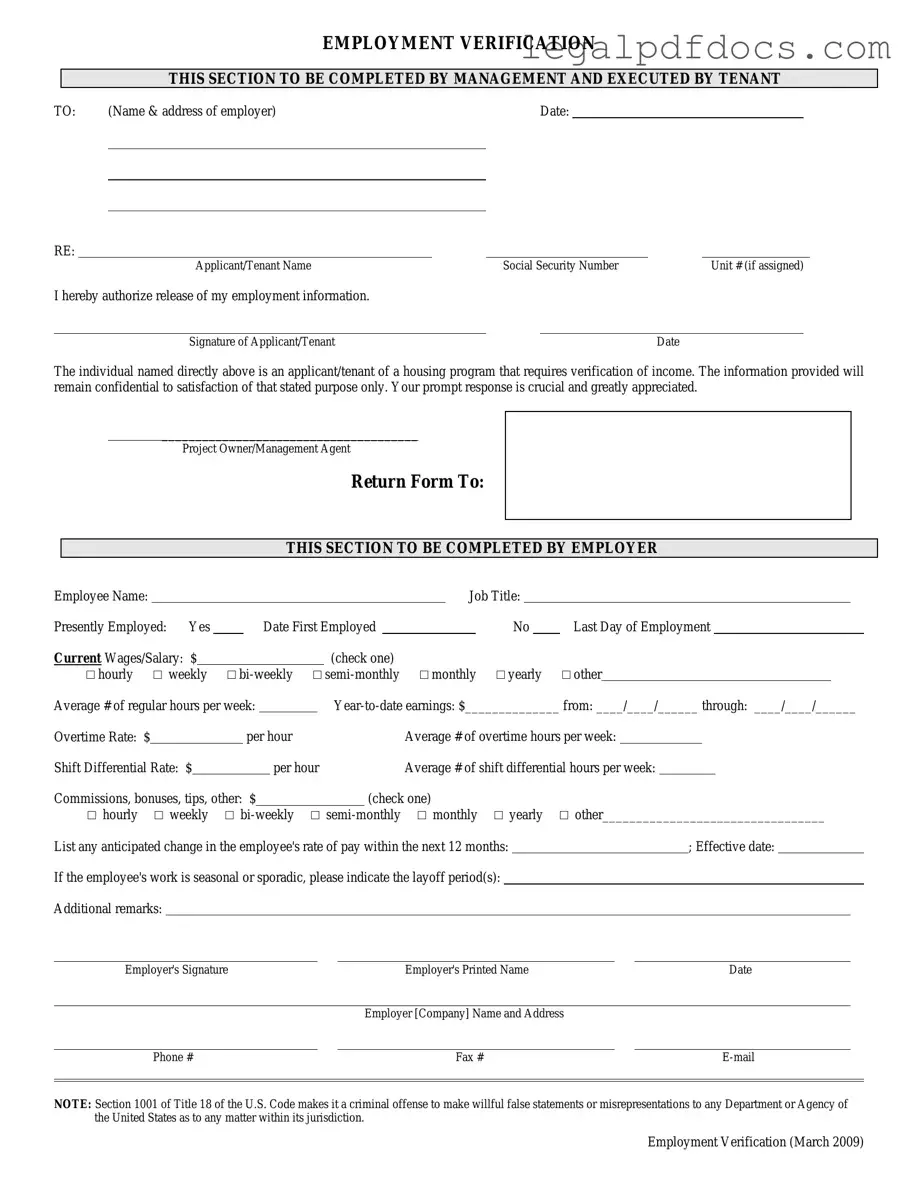Fill Out a Valid Employment verification form Template
An Employment Verification Form is a document used by employers to confirm a current or former employee's job details, such as their position, salary, and duration of employment. This form plays a crucial role in the hiring process, helping prospective employers assess a candidate's work history. If you need to complete this form, click the button below to get started.
Open Employment verification form Editor Here
